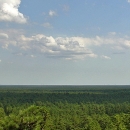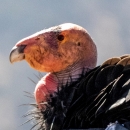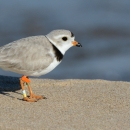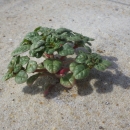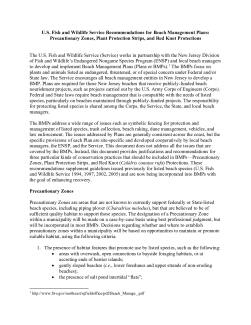
The U.S. Fish and Wildlife Service (Service) works in partnership with the New Jersey Division of Fish and Wildlife’s Endangered Nongame Species Program (ENSP) and local beach managers to develop and implement Beach Management Plans (Plans or BMPs). The BMPs focus on plants and animals listed as endangered, threatened, or of special concern under Federal and/or State law. The Service encourages all beach management entities in New Jersey to develop a BMP. Plans are required for those New Jersey beaches that receive publicly-funded beach nourishment projects, such as projects carried out by the U.S. Army Corps of Engineers (Corps). Federal and State laws require beach management that is compatible with the needs of listed species, particularly on beaches maintained through publicly-funded projects.
This document provides justifications and recommendations for three particular kinds of conservation practices that should be included in BMPs—Precautionary Zones, Plant Protection Strips, and Red Knot (Calidris canutus rufa) Protections.
| Attachment | Size |
|---|---|
| 2015_BMP_Recommendations_508.pdf200.25 KB | 200.25 KB |
